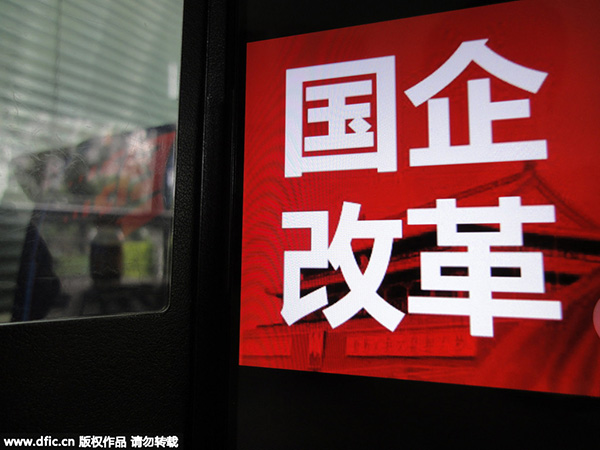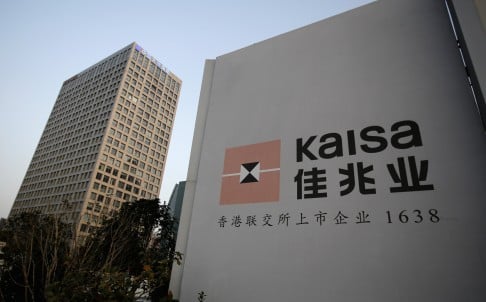–

–
“China, the innovation nation. With nine times more engineering graduates and more patents filed each year than in the US, China is transitioning quickly away from its roots as a copycat, knockoff economy to become a potent new high-tech power.” By now, we’ve all read the headlines, heard the hype. China’s high-tech ambitions were part of the sales pitch used in Alibaba’s successful US IPO last month.
No story about China, no prediction about China’s future gets more attention or more traction from consultants, authors, policy analysts. It encapsulates the unanimous hopes of China’s leadership, and the fears of America’s. “China is now standing at a critical stage in that its economic growth must be driven by innovation,†declared China’s ruling State Council in May this year.
While China is certainly making strides the reality is sobering. For all the hype, the government policies and cash, China remains a high-tech disappointment, more dud than ascending rocket. As a banker living and running a business in China, I very much wish it were otherwise. But, I see no concrete evidence of a major change underway. The best the many boosters can offer is, “give it more time and it’s bound to happenâ€. In other words, they make their case unfalsifiable, by saying today’s China’s tech famine will turn into a feast, if only we are prepared to stand by the empty banquet table long enough.
Unlike a lot of those forecasting China’s inevitable rise to technology superpowerdom, I’ve actually met and talked with hundreds of Chinese tech companies, and before that run a California venture capital firm with investments in the US, Israel and Europe. I’ve also run a high-tech enterprise software company in the US that used proprietary technology to gain leading market position and ultimately a high price from an acquirer when we sold the business. So, I’ve been around the tech world a fair bit, both in China and elsewhere. Rule number one: deal with the facts in front of you, not wishful thinking. Rule number two: a high-tech economy is not a quotient of national IQ, national will, national urgency or national subsidies. If it were, China might well by now be at the epicenter of global innovation.
High-tech is meant to be a savior of China’s economy, delivering higher levels of affluence in the future and an escape from the so-called “middle income trap” that has slowed growth elsewhere in Asia. But saviors have a nasty habit of never arriving.
Let’s start with perhaps the most glaring weakness: China’s failed efforts, despite momentous efforts across more than a decade, to reach even the first rung of high-tech engineering competence by designing and serially producing jet engines.
Military power both requires and underpins high-tech success. Any doubt about this was eliminated by the collapse of USSR. I was fortunate to have a front-row seat for that event. During the 1980s and 1990s, as a Forbes journalist, I spent a lot of time in the USSR surveying both its military and civilian industries, its indigenous technology base. I was one of the few who got to spend time, for example, inside the secret Soviet rocket program, including visiting main factories where its rockets and space station were built. The rocket program was for decades the pinnacle of Soviet tech achievement.
But, it proved to have little overall spinoff benefit for USSR economy. It was a dead-end. Note: the Soviet Union then, like China now, had far more engineers and engineering graduates than the US.
As I wrote back in the 1990s, US’s military supremacy rests as much on Intel and Broadcom as it does on Lockheed Martin fighter jets and GD nuclear submarines. The US has a huge fast-adopter civilian technology market with strong competitive dynamics, something China is without. This means US military then and now can procure the best chips, best integrated software and systems cheaply and quickly from companies that are mainly serving the civilian market. The Soviet Union had no civilian high-tech industry, no market forces. The Soviet military was exposed as a technology pauper by the 1989 Iraq War.
China is different and better off in so many ways. It now manufactures a lot of the world’s most advanced civilian high-tech electronics products. This gives China huge advantages USSR never had. All the same, the USSR by the mid-1950s was producing jet engines for military and civilian use. To this day, China relies on Russia, using Soviet-successor technologies, for its advanced military jet engines. Russian jet engines are generally considered a generation at least behind the best ones manufactured now in the US, France, UK.
China’s inability to make its own advanced jet engines casts light on problems China has, and likely will continue to have, developing a globally-competitive indigenous technology base. In the case of jet engines, the problems are at manufacturing level (difficulty to serially produce minute-tolerance machinery), at the materials level (lack of special alloys) at the industrial level (only one designated monopoly aircraft engine producer in China, so no competitive dynamic as in the US between GE and P&W).
A recent report on China’s jet engine industry puts the technology gap in stark terms. “In some areas,” it concludes, “Chinese engine makers are roughly three decades behind their U.S. peers.”
This challenge, to bring all the parts together in a high-technology manufacturing project, is also evident in China’s failure, up to now, to develop and sell globally domestically-developed advanced integrated circuits, pharmaceuticals, new materials. In drug development, China by some estimates has spent over $10 billion on pharmaceutical research and up to now has had only one domestically-developed drug accepted in the global market, the modestly-successful anti-malarial treatment Qinghaosu (artemisinin). Interestingly, it is derived from an herbal medicine used for two thousand years in China to treat malaria. The drug was first synthesized by Chinese researchers in 1972.
It’s simply not enough to count engineers and patents, or the content of government technology-promotion policies. China lacks so many of the basic building blocks of high-tech development. Included here is a mature, experienced venture capital industry staffed by professional entrepreneurs and technologists, not MBAs. A transparent judicial system is also essential, not only for protecting IP, but managing the contractual process that allows companies to put money at risk over long-periods to achieve a return. Non-Disclosure and Non-Compete agreements, a backbone of the technology industry in the US, are basically unenforceable in China. Not just here in China, but anywhere this is the case you can about kiss goodbye big-time technology innovation.
While ignoring the troubling lessons of China’s failure to produce a jet engine (as well as jet brakes and advanced radar systems) the boosters of China’s bright tech future these days most often cite two mobile phone-related businesses as signs of China’s innovation. The two are Xiaomi mobile phones, and Tencent‘s WeChat service. Both have had great success in the last year, including getting some traction in markets outside China. Look a little deeper and there’s less to be positive about.
Xiaomi is a handset manufacturer that now has a market valuation of over $10 billion, higher than just about any other mobile phone manufacturer. It relies, though, on the same group of mainly-US companies (Broadcom, Qualcomm, Google) for its phones. They, along with UK chip-maker ARM and non-Chinese screen manufacturers, are the ones making the real money on all Android phones. In addition, Xiaomi’s phones as are many cases manufactured by Taiwanese company Foxconn. As of now, China has no domestic company that can achieve Foxconn’s levels of quality at low manufacturing cost. Foxconn does this from factories in China. Its superior management systems for high-volume high-quality production also underscore another critical area where China’s domestic technology industry is weak.
With WeChat, it’s done some impressive things, in signing up over 300 million users. The basic application is similar to that of Facebook‘s WhatsApp and others. Its real technology strength is in its back end, in building and managing the servers to store all the content that is sent across WeChat, including a huge amount of video and audio files.
Whatsapp doesn’t have similar capacity. In fact, it points with pride to the fact it doesn’t backup for storage any Whatsapp customers’ conversations. Tencent does this because it’s required to do so by Chinese internet rules and government’s policies to monitor internet content. Tencent might be able to commercialize and sell globally its backend storage architecture, but it’s not clear anyone would be interested to own it. It’s a technology that evolved from specific Chinese requirements, not market demand.
Earlier this year I spoke on a panel at a conference in Shanghai of the global bio-manufacturing industry. This is precisely the sort of area where China most needs to up its game. Bio-manufacturing relies on a combination of first-rate science, cutting-edge manufacturing techniques and far-sighted management. After all the talk and the establishment of dozens of government-funded high-tech pharmaceutical science parks across China, the simple verdict was China has yet to achieve any real success in this industry.
China is not alone, of course, in having its difficulties nurturing a globally-competitive indigenous technology industry. In their time, most of the world’s advanced major economies have all tried — Germany, France, Japan, UK. All lavished government subsidies to foster domestic innovation. All made technology a policy priority. Yet, all have basically failed. If anything, the US is now more dominant in high-technology than it was at any earlier time in history. The US is home to most of the companies earning high margins, market shares and license fees for their proprietary technology.
China has already achieved what no other country has: in the course of a single generation, it has achieved the highest-ever sustained rate of growth, and so lifted hundreds of millions of its citizens out of poverty. This achievement shows the capabilities of the Chinese people, the far-sighted and pragmatic skills of its policy-makers. Both will continue to deliver benefits for China for decades to come.
For China, becoming a tech power is neither certain nor impossible. Progress can be hurt more than helped by those who engage more in hype, in predicting certain outcomes, rather than critically assess the impediments, and learn lessons from the failed efforts so many other countries have had in developing a technology industry. New thinking about innovation, and how to encourage it in China, is still lacking.
–





















